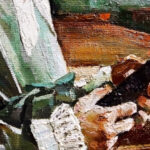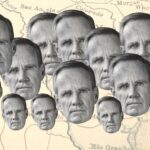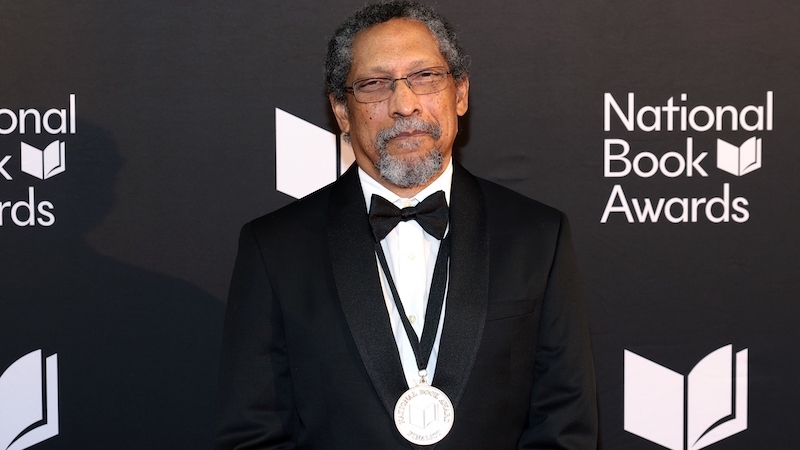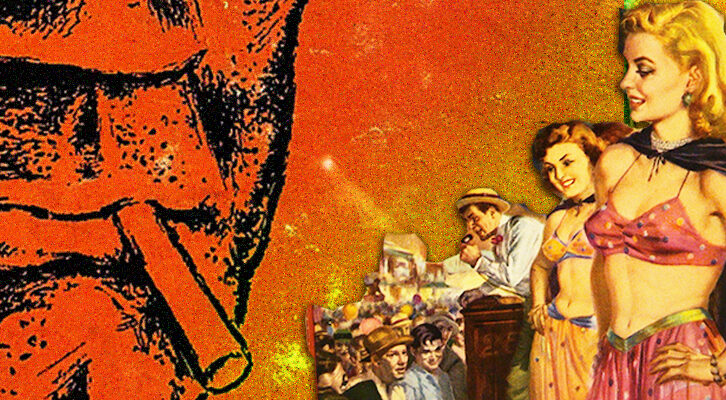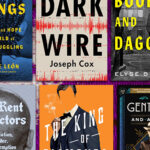NBCC Resistance Lit: Your Inauguration Week Reading List
From Langston Hughes to Rachel Hall and more
What’s your favorite work of resistance literature? That’s the question that launches this year’s NBCC Reads series, which draws upon the bookish passions of NBCC members and honorees at this time of cultural shift. (NBCC Reads from previous years here.) Leading up to the #WritersResist events held yesterday, January 15—Martin Luther King Jr.’s birthday—and in advance of this Friday’s inauguration, now—on a day honoring one of America’s great heroes—is a moment to draw on all possible inspiration from poetry to prose. Resist.
Steph Burt on Langston Hughes’ “ASK YOUR MAMA”
When Langston Hughes began writing his last great long poem, “ASK YOUR MAMA” (he used all caps for the title and much of the poem) he might have feared that history had left him behind. As the critic Scott Saul has shown, Hughes started it at the 1960 Newport Jazz Festival, after young white fans rioted when they couldn’t get in: the city canceled the concerts, and advanced black jazz players staged their own event afterwards, with Hughes as MC. It’s a poem whose multiple, braided voices, shouts and laments look to multiple traditions in black American—and not only black American—music-making, from early acoustic blues to boogie-woogie to European art song to the new dissonances of Coltrane, or Coleman. Hughes opens “IN THE QUARTER OF THE NEGROES / WHERE THE DOORKNOB LETS IN LIEDER” and blazes on through (among many other things) a very Hughesian rewrite on gospel motifs: “DOWN THE LONG HARD ROW THAT I BEEN HOEING / I THOUGHT I HEARD THE HORN OF PLENTY BLOWING / BUT I GOT TO GET A NEW ANTENNA, LORD / MY TV KEEPS ON SNOWING.”
That’s the kind of great stanza you might expect from Hughes, in 1960 or 1925. But there’s much more: ASK YOUR MAMA always asks for more—it is, above all, never satisfied, and it never says just one thing. The repeated title “ASK YOUR MAMA” means “look to your heritage” (if you are black) but also “stay angry,” and also “don’t ask me.” There’s a roll call of eminent African Americans and postcolonial leaders from “JIMMY BALDWIN” to “LUMUMBA” to Blind Lemon Jefferson: the poem is, in part, an excuse to list those leaders. Yet that list suggests that international, revolutionary movements have the momentum, while black and white American society, left to itself, might indeed (as Hughes implied twelve years earlier) “explode”: “THE TOLL BRIDGE FROM WESTCHESTER / IS A GANGPLANK ROCKING RISKY,” “ON THE BIG SCREEN OF THE WELFARE CHECK / A LYNCHED TOMORROW SWAYS / WITH ALL DELIBERATE SPEED.” (Italics alongside those lines reads, in part, “the metronome of fate begins to tick faster.”)
ASK YOUR MAMA explores Hughes’s frustration with readers—white and black—who thought of integration as the end of history, as the ultimate goal, and with Americans who think “America” is the best name for what we most value, who think “America” can do no wrong. “ONE SHOULD LOVE ONE’S COUNTRY / FOR ONE’S COUNTRY IS YOUR MAMA”—that couplet leaves many rooms for many tones, from sarcasm to quiet insistence to flailing resignation. What do you think of your country and where it’s headed now, Mr. Hughes? Senator Reid? Mr. Brown? Mr. Rice? Mr. Garner? YOUR MAMA.
With its indications for musical accompaniment (“Maracas continue rhythms”), its back-and-forth between quatrains and shouted free verse, ASK YOUR MAMA has to be Hughes’s attempt to hear and respond to the first notes and strands of free jazz, of the Black Arts Movement, of 1960s radical consciousness, of decolonization, with resolute hope. But it’s also a poem about what to do, what sounds you can make, and what art you can assemble, out of frustration and rage at the frayed end of what looked like a multiracial, forward-looking, American project in politics and the arts, whether it’s one festival in one city, or the early (and most multiracial) phase of the civil rights movement, or the Obama administration, or the rule of law.
The sound ASK YOUR MAMA makes—raucous, fed-up, agitated, uncertain—is the sound of “What do I do next?” and the sound of “What do we do?” from a poet who knows who “we” are—in this case, African-Americans and Afro-diasporic listeners—but not, exactly, where he belongs. And it’s the sound—or sounds—of resistance: not just to any particular politics, not just to any explicit artistic program, but to anyone who thinks they know just what’s coming next, and what we can do. It’s a poem whose metrics, whose organization, even whose typography stays upset, and keeps us uncertain, because certainty is the enemy of politics, and the enemy of hope. To anybody who thinks things will surely get better, or surely get worse; to anybody who wants to tell a group or an individual that their anger doesn’t count; to anybody who hasn’t noticed the danger signs in the news or in the right streets, and to anybody who thinks that only their program will do, Hughes’s polyphonic phrases have a message. What do they tell you? ASK YOUR MAMA.
Steph Burt is a poet, literary critic, and professor of English at Harvard University, and author of the essay collection Close Calls with Nonsense (Graywolf Press, 2009), a finalist for the National Book Critics Circle Award, and, most recently, of The Poem Is You (Harvard University Press 2016).
_________________________
Ron Smith on Arthur Miller’s The Crucible
Arthur Miller’s The Crucible is designed to infuriate.
Those who find it a classic tragedy—one that provides a “cleansing” catharsis—are in the minority, I think. And they miss the point. Miller’s Death of a Salesman leaves most audiences wrung out, weeping more or less hopelessly. His Crucible, though, leaves most audiences weeping angrily. It didn’t have to happen, we say—if only those irrational people had listened—if only the rational, sensible people had acted sooner–
Miller wrote The Crucible in the spirit of Ibsen’s Enemy of the People, that earlier play about an ordinary, stubborn man becoming radicalized by the lies and injustice of his community. Like Hollywood’s High Noon, The Crucible is a call to resistance against the Communist Witch Hunts of the early 1950s. But it is much more than that.
John Proctor is an individualist in the best sense of the word. He refuses to let other people think for him—and, at the end, he refuses to be used by his community for evil purposes. We come to understand that small conformities can lead swiftly to malevolent enormities. Proctor loves life, loves the physical world, and he does not believe in an afterlife.
The Crucible offers a number of role models for resistance. Proctor’s wife, Elizabeth, is strong and strong-minded. Elderly Rebecca Nurse, kind, patient, and warm-hearted, goes to the gallows a confident, untroubled Christian, ready to meet her Maker.
But John Proctor is this play’s flawed, all-too-human protagonist. Like Robert Bolt’s Thomas More in A Man for All Seasons, Proctor does everything he can to avoid execution. Still, at the end, he is willing to die rather than be publicly humiliated. After months of self-disgust at his weaknesses, Proctor goes to the gallows at last proud of himself, consciously setting an example of courageous resistance for his sons.
And when he leaves the stage, I am filled with admiration at this genuine heroism, this fiercely reluctant martyrdom. I weep at senseless loss, and I feel rage that Puritan pygmies can cause such suffering. And can even cause the death of a man as strong, honest, and clear-sighted as John Proctor. Like Robert Bolt’s Thomas More, Proctor dies rather than sell his soul.
The Crucible inspires vigilance, blunt honesty, and moral exertion. The anger it engenders is our fuel for action.
Ron Smith was Poet Laureate of Virginia from 2014 to 2016. He has published three books of poetry with Louisiana State Press (including the forthcoming The Humility of the Brutes) and one with University Presses of Florida. Smith has taught poetry and poetry writing at Virginia Commonwealth University, University of Richmond, and University of Mary Washington, and is Poetry Editor of Aethlon: The Journal of Sport Literature. He is currently Writer-in-Residence at St. Christopher’s School in Richmond, Virginia.
_________________________
Paul Wilner on John Steinbeck’s In Dubious Battle
I first read Steinbeck’s In Dubious Battle, published in 1936, in high school, and it has stayed with me. An account of a strike by migrant apple workers in fictional “Torgas County,” standing in for a real-life labor dispute in Tulare County, it captures the disillusioned mood of Depression-era America. The infatuation with the Communist Party as a tool to mobilize those left out is portrayed here clinically, and, Steinbeck’s protestations to the contrary, sympathetically. Strike leader Mac McLeod and his young disciple, Jim Nolan, are clear-eyed about the consequences of their actions, but argue that the ends justify the means.
“Listen… we’re probably going to lose this strike,’’ Mac tells a local picker he’s recruited to the cause. “But we maybe raised enough hell so maybe there won’t be a strike in the cotton… It doesn’t make any difference if we lose. Here’s nearly a thousand men who’ve learned how to strike…”
It’s a quietly furious novel, less magniloquent than The Grapes of Wrath, but more effective, for my money. Steinbeck’s loner stance puts him at a distance from the agit-prop work of the day, from Dos Passos to broadly drawn Popular Front fiction.
A sympathetic medic, Doc Burton, supplies counterpoint to the revolutionary mood, arguing that “violence begets violence… It seems to me that man has engaged in a blind and fearful struggle out of a past he can’t remember into a future he can’t foresee nor understand.’’
We may not see the future lying before us, but Steinbeck has provided a valuable roadmap to the lessons of the past. He may have fought kicking and screaming against the label of “engaged’’ writer—he’ll never be confused with Sartre, to his credit—but he understood the power, as well as the perils, of resistance.
Paul Wilner is a frequent contributor to the San Francisco Chronicle, Zyzzyva, and other publications.
_________________________
Erika Dreifus on Rachel Hall’s Heirlooms
The NBCC’s call for writing on favorite “resistance literature” brought to mind my friend Rachel Hall’s Heirlooms. Selected by Marge Piercy as winner of the G.S. Sharat Chandra Prize and published this fall by BkMk Press, Hall’s collection of linked short stories is grounded in her family history. This includes the history of her mother’s biological father—Hall’s grandfather—a member of the French Resistance who was executed not far from Lyon in August 1944.
Heirlooms indeed features a character modeled on Hall’s grandfather. And after similarly courageous deeds, the fictional hero meets his same fate. In “Generations,” one of the book’s most memorable stories, Hall depicts the murder of this character—and fellow résistants—on that terrible day.
That scene is revealed through the perspective of an onlooker—a Frenchman who just happens to witness the mass execution. Although we don’t meet him again, the story leaves us quite aware that he won’t ever be quite the same.
Of course, as the subsequent stories in the book make amply clear, the fictional résistant‘s family is also forever changed. And a few months ago, Hall published an essay on Literary Hub, “My Grandfather, the French Resistance Fighter.” It’s a terrific standalone essay. But in its focus on her grandfather’s Resistance legacy it’s also a worthy complement to Hall’s book and to the Generations story in particular.
In an earlier phase of my life, I was an historian. My specialty was modern France; my super-specialty was the 1939-45 period. So I know a bit about the “resistance literature” associated with that country and that time. I’ve mentioned that Rachel Hall is my friend, but even without the affection and admiration that I have for her I’d want to recommend Heirlooms. I’m grateful to the NBCC for this chance to do so.
Follow Erika Dreifus on Twitter @ErikaDreifus, where she tweets “on matters bookish and/or Jewish.”
_________________________
Mike Lindgren on Jonathan Swift’s Gulliver’s Travels
Gulliver’s Travels cannot rightly be called “a book on the theme of resistance,” for it was itself an act of resistance—a political satire published anonymously at a time when sedition was punishable by torture and execution. In the days since the election, thinking of Swift’s masterpiece has brought me an astringent kind of psychological comfort—not so much cheer as a kind of grim pleasure. England in 1726 was wracked by extraordinary violence and unrest—the country was only six years removed from a ruinous financial panic, and was under the heel of a war-mongering, dangerously unstable ruler of questionable mental facility, surrounded by ruthless, manipulative men. At any rate, for me the scene that comes most immediately to mind is the famous passage wherein the royal palace catches on fire and Gulliver, thinking quickly, acts to put it out in the most immediate way imaginable: by urinating on it. It seems aptly suited to our time.
Michael Lindgren is a freelance writer and musician whose reviews appear in the Washington Post, among other places. He lives in Jersey City, New Jersey.
_________________________
Ilana Masad on Rowan Hisayo Buchanan’s Harmless Like You
In Rowan Hisayo Buchanan’s debut novel, Harmless Like You (out in the UK, coming out in the US in February), resistance is a young woman decided to remain in the US and not return with her parents to Japan. It looks like a young woman floating through life and trying to understand herself through other people, and through her art. It’s a young woman trying her hand at photography, and being proud of her work even while she critiques it heavily and wonders if it is ever or will ever be good enough.
Resistance can look like refusing to be content with the cage that has been created for her, gilded and beautiful as it is. It can look like a woman leaving her husband and son and always meaning to go back, but never quite managing to. It can look like a woman deciding to find herself rather than define herself through marriage and motherhood.
Resistance can also look like a young man who grows up without a mother deciding not to care about her. It can look like a young man marrying a woman who fits him, who loves him, and refusing to be nice to her when his father dies. It can be his insistence that he has to keep his bald cat because she gives him comfort in a way that no one else exactly can. Resistance can look like a man not knowing how to love his child but trying, trying, trying. It can look like a man deciding to stay where his mother decided to leave.
Resistance can look like a 27-year-old author giving life and love to characters who aren’t always loveable, but who resist their own flaws as best they can.
Ilana Masad is a fiction writer and book critic living in New York. Her work has appeared in The Guardian, The New Yorker, The Los Angeles Times, Electric Literature, Broadly, Vice, McSweeney’s, and more. She is the founder and host of The Other Stories, a podcast featuring new, emerging, and established fiction writers.



